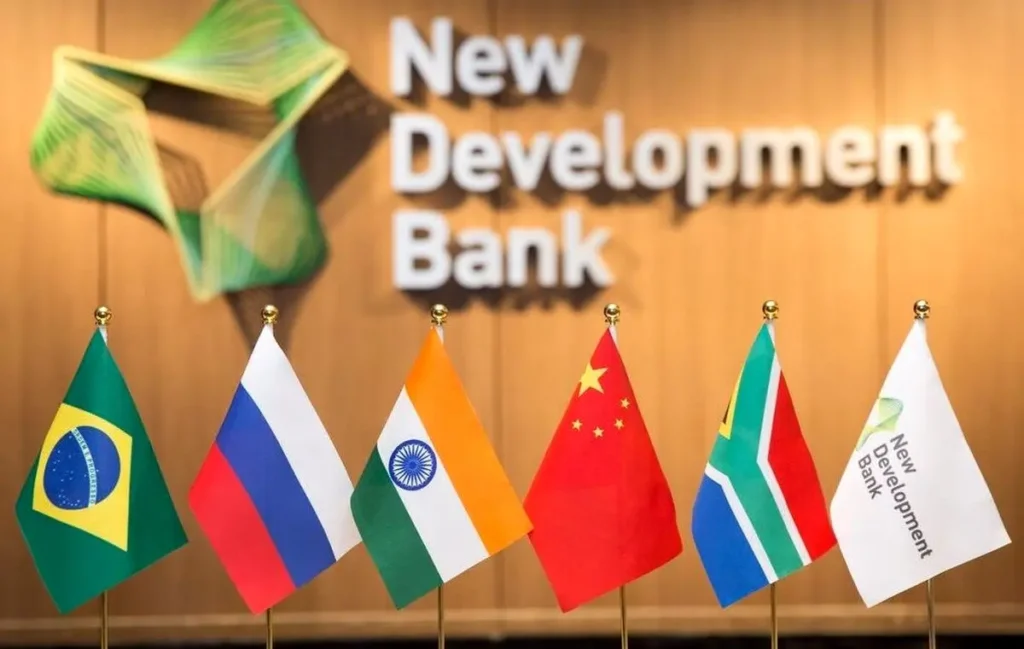asu football jersey
asu football jersey
Ohio State Team Jersey
custom football jerseys
49ers jersey
College Football Jerseys
johnny manziel jersey
Florida state seminars jerseys
asu football jersey
Florida State Seminars jerseys
fsu football jersey
ohio state jersey
ohio state jersey
College Football Jerseys
- The BRICS-owned New Development Bank (NDB) was established in 2015 by Brazil, Russia, India, China, and South Africa.
- The multilateral lender plans to disburse about $5 billion in loans this year.
- The bank has an initial verified capital of $100 billion and a subscribed capital of $50 billion.
Emerging economies could give the superpowers a run in the lending sector with the the BRICS alliance planning to disburse about $5 billion in loans this year. This was announced by the bloc’s New Development Bank (NDB) Vice President Zhou Qiangwu on Tuesday, March 26.
As China, one of Africa’s closest trade partners, experiences reduced activity in the region, with lending taking a nose dive to its lowest level in almost two decades, what are the chances NDB can make it better?
The Vice President noted that the pandemic slowed progress, but the lender’s operations are expected to resume. “During the epidemic, our business was somewhat affected, and now everything is going back on track,” Zhou said.
According to available information, Zhou did not elaborate on how the bank may have been off track but said China and India had received slightly more investment from the bank than other members.
The Vice President also expected China’s economy to grow about 5 per cent this year, which aligns with the government’s target.
Lending opportunities for BRICS bank
This year started with a bang as the bank concluded the signing of its debut (syndicated terms loan facility) of $2 billion. On the same note, the bank’s high-level delegation concluded an exploration visit in Bangladesh as infrastructure and sustainable development initiatives are expected to occur under NDB’s funding.
According to the bank, two projects with a funding potential of $760 million are currently being considered. In the same breath, the NDB delegation, led by Vice-President and Chief Operations Officer Vladimir Kazbekov, concluded a four-day visit to Egypt to discuss financing opportunities in various infrastructure and sustainable development sectors, including airports, water, energy, and social infrastructure.
By 2023, Egypt had become another addition to the growing pool of developing nations hoping for the NDB’s lending opportunity. However, the bank has injected more investments into India and China than other members, as both the BRICS nations’ economies are growing.
“The loan repayment could be easier helping the NDB achieve its target of $5 billion in 2024,” a report by Watcher Guru said in part.
Moreover, Zhou revealed that NDB expects China’s economy and GDP to grow by over 5 per cent in 2024. The target aligns with the government’s expectations as the Chinese economy is booming. On the other hand, BRICS member India’s economy is also on the rise, as its GDP surges around 6 per cent every year.
“India and China are emerging economies that outdo the US and the West regarding GDP and purchasing power parity (PPP). This development makes the BRICS a serious contender to challenge the US financial system as their economies are experiencing massive growth,” the Watcher Guru report said.
Also read: From US Dollar to diversification: How BRICS Pay will impact US-Africa trade
What you need to know about BRICS bank
The BRICS Bank was developed in 2015 to finance infrastructure and sustainable development projects in BRICS and other emerging markets economies and developing countries.
According to a report by Rights in Development, the bank has an initial verified capital of $100 billion and a subscribed capital of $50 billion. With a clear intent to execute lending in a rather peculiar manner that is opposite to traditional Western-controlled development banks such as the World Bank, NDB says it approaches the market differently.
The bank insisted that it didn’t want to challenge the Western banks but crown the efforts made by institutions. It targets grand markets such as Indonesia and Mexico, striving to detach from unfair dealings with the West.
Further, in terms of operations, the bank is governed by a board of governors made up of finance ministers from the five BRICS countries and a board of directors. Moreover, voting power within the board is based on each country’s shares in the bank.
“While new members can join the NDB, the five BRICS countries will retain a minimum of 55 per cent of total shares. The NDB’s management includes a presidency that rotates among BRICS members and four final vice presidents selected from the remaining BRICS countries. The current NDB President.”
In its first year as the challenger to mainstream lending, it approved a first set of projects, one in each of its five member countries, amounting to nearly $911 million.
What has been financed so far?
The bank focuses on energy, thus funding a $250 million loan to India’s Canara Bank for 500 megawatts of renewable energy projects. A $81 million loan was disbursed for 100 megawatts of rooftop solar power in China. A further $300 million loan went to Brazil’s national development bank.
What’s more, $180 million loan has been issued to South Africa’s energy utility, Eskom, to invest in transmission lines and connect renewable electricity capacity to the national grid.
The World Economic Forum (WEF) finds NDB innovative in supporting new activities and emerging sectors such as renewables and energy efficiency.
Is NDB too good to be true
The journey and dream of having an independent and non-traditional financier are somewhat faced with critiques that raise questions about whether NDB might be another fancy failure.
It began with the 2024 BRICS Summit, an intense race between China and India to host the bank’s headquarters.
According to ODI, a think tank, it seemed odd for India to propose New Delhi when Mumbai is better placed as an international financial centre. According to the Fortaleza Declaration, a regional centre for the bank will be established in South Africa, with the headquarters based in Shanghai, further consolidating Shanghai’s dream to be a global centre for finance.
According to a report by Right in Development, the first year of operations expressed positive aspects, including an initial focus on small-scale energy projects, and various civil society groups raised concerns. The issues included whether the NDB will be a force for South-South cooperation and sustainable development as hoped.
The report said in part, “There are significant concerns regarding the NDB’s lack of transparency and engagement with civil society. There are also serious doubts about how the NDB will promote sustainable, pro-poor development and avoid harm without having sustainability criteria and robust environmental safeguards in place.”
The bank comes to the fold with a clear-cut focus on finance projects and innovative, tailored solutions to support establishing a more inclusive, resilient, and sustainable future for the planet.
However, there are a myriad of ways to ensure the banks perform. The think tank argues that contributing $10 billion each to the initial subscribed capital base ensures no country will possess veto power over significant issues like the US does with the World Bank and the IMF.
Also, rotating the bank’s presidency allows each country to propose their candidate to lead the bank.
Also read: Can BRICS’ blockchain currency bid usher in a new era of economic freedom?




